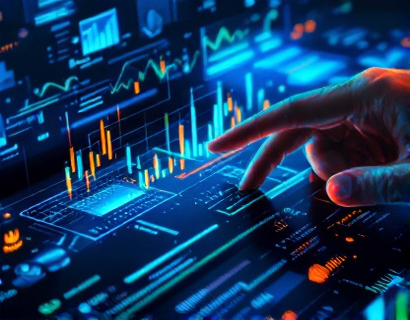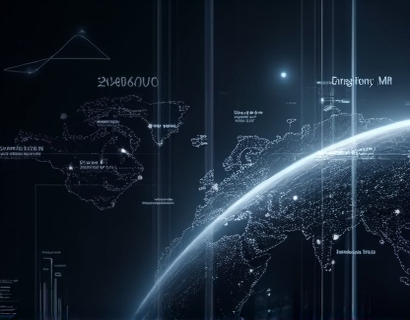Maximize Your Aquaponics Business with Advanced Management Software
In the rapidly evolving world of sustainable agriculture, aquaponics stands out as a promising method that combines fish farming and hydroponic plant cultivation in a symbiotic environment. For aquaponics farmers and businesses, managing these interconnected systems efficiently is crucial for success. The integration of cutting-edge management software can significantly enhance the productivity, sustainability, and overall performance of an aquaponics operation. This article delves into how advanced management software can transform aquaponics businesses, providing tools and insights to optimize every aspect of the farming process.
Understanding the Importance of Management Software in Aquaponics
Aquaponics systems are complex, involving the balance of water quality, nutrient levels, temperature, and the health of both fish and plants. Managing these factors manually can be time-consuming and prone to errors. Advanced management software addresses these challenges by offering a comprehensive platform to monitor and control various parameters in real-time. This technology not only streamlines operations but also ensures that the ecosystem remains stable and productive.
Key Features of Advanced Management Software
1. Real-Time Monitoring: Advanced software provides continuous monitoring of water parameters such as pH, ammonia, nitrite, and nitrate levels. This real-time data helps in making informed decisions to maintain optimal conditions for both fish and plants.
2. Automated Alerts: The software can be configured to send alerts when parameters fall outside predefined ranges, allowing for prompt action to prevent issues that could harm the system.
3. Data Analytics: Historical data and trends can be analyzed to identify patterns and make predictive adjustments, enhancing the overall efficiency of the aquaponics system.
4. Integration Capabilities: Modern software can integrate with various hardware components, such as pumps, filters, and sensors, to automate routine tasks and reduce manual intervention.
5. Reporting Tools: Detailed reports on system performance, resource usage, and crop yields provide valuable insights for decision-making and business planning.
Enhancing Productivity Through Automation
One of the primary benefits of using advanced management software in aquaponics is the automation of routine tasks. Automation reduces the need for constant manual monitoring, allowing farmers to focus on higher-value activities such as system design, crop management, and business development. For instance, automated feeding systems can ensure that fish receive the right amount of feed at the right times, optimizing growth and reducing waste.
Moreover, automated dosing systems for nutrients and chemicals can maintain precise levels, which is critical for the health of both fish and plants. This level of precision not only improves the quality of produce but also minimizes the environmental impact by reducing excess nutrient runoff.
Case Study: Productivity Gains
A case study from a mid-sized aquaponics farm illustrates the productivity gains achieved through the use of advanced management software. Before implementing the software, the farm relied on manual monitoring and occasional manual adjustments, leading to inconsistent results and occasional system failures. After integrating the software, the farm saw a 30% increase in fish growth rates and a 25% increase in plant yields. The automated systems reduced the time spent on monitoring by 40%, allowing the farm to expand operations and enter new markets.
Boosting Sustainability with Smart Technology
Sustainability is a core principle of aquaponics, and advanced management software plays a pivotal role in achieving this goal. By optimizing resource usage and minimizing waste, these systems contribute to a more environmentally friendly farming practice. For example, precise nutrient dosing ensures that only the necessary amount of nutrients is added, reducing the risk of over-fertilization and subsequent water pollution.
Energy consumption is another critical aspect of sustainability. Advanced software can monitor and control the energy usage of pumps, lights, and other equipment, ensuring that they operate efficiently. Some software solutions even integrate with renewable energy sources, such as solar panels, to further reduce the carbon footprint of the operation.
Environmental Impact Reduction
A study conducted on a large-scale aquaponics facility demonstrated the environmental benefits of using management software. The facility reduced its water usage by 20% and energy consumption by 15% after implementing the software. Additionally, the precise control over nutrient levels minimized the risk of nutrient leaching into surrounding ecosystems, thereby protecting local water bodies and biodiversity.
Improving Decision-Making with Data-Driven Insights
Data is the backbone of modern agriculture, and aquaponics is no exception. Advanced management software collects and analyzes vast amounts of data, providing farmers with actionable insights. These insights can inform decisions on crop selection, system adjustments, and market strategies.
For instance, by analyzing growth patterns and yield data, farmers can identify the most profitable crops to cultivate. This data-driven approach ensures that resources are allocated efficiently, maximizing profitability while maintaining sustainability.
Market Analysis and Planning
Market trends and consumer preferences play a significant role in the success of an aquaponics business. Advanced software can integrate market data, helping farmers stay ahead of the curve. For example, if there is a growing demand for organic produce, the software can highlight this trend, prompting the farmer to adjust their crop mix accordingly. This flexibility is crucial in a competitive market and can be the difference between success and failure.
Enhancing Customer Trust and Brand Value
In today's consumer-driven market, transparency and trust are paramount. Advanced management software can help aquaponics businesses enhance their credibility by providing real-time data to customers. For example, QR codes or digital labels can link to a website where customers can view real-time data on water quality, nutrient levels, and other system parameters. This level of transparency not only builds trust but also adds value to the brand, attracting environmentally conscious consumers.
Moreover, detailed reporting tools within the software can be used to create comprehensive sustainability reports, which can be shared with stakeholders, investors, and regulatory bodies. These reports demonstrate the business's commitment to sustainable practices, further enhancing its reputation and market position.
Building a Strong Online Presence
In the digital age, having a strong online presence is essential for any business. Advanced management software can integrate with e-commerce platforms and social media channels, allowing aquaponics businesses to showcase their products and practices to a wider audience. For instance, live feeds from the farm can be shared on social media, giving customers a glimpse into the sustainable practices being employed. This visual connection can significantly enhance customer engagement and loyalty.
Additionally, the data collected by the software can be used to create educational content, such as blog posts and videos, that explain the benefits of aquaponics and the specific practices used by the farm. This content not only educates potential customers but also positions the business as a thought leader in the industry.
Overcoming Challenges with Technology
While the benefits of advanced management software are clear, there are challenges that aquaponics businesses may face during implementation. One common challenge is the initial cost of investing in the software and necessary hardware. However, the long-term savings in labor, resources, and increased productivity often outweigh these initial expenses.
Another challenge is the learning curve associated with new technology. To mitigate this, many software providers offer comprehensive training and support, ensuring that farmers can fully leverage the tools at their disposal. Online tutorials, webinars, and community forums can also provide ongoing assistance and peer support.
Scalability and Flexibility
As aquaponics businesses grow, their management needs evolve. Advanced software solutions are designed to be scalable, accommodating the expansion of operations without compromising performance. Whether a small startup or a large-scale operation, the software can adapt to the specific requirements of the business, providing a flexible and robust management platform.
Furthermore, the modular nature of these systems allows for the addition of new features and integrations as technology advances. This ensures that the business remains at the forefront of innovation in the aquaponics industry.
Conclusion
Advanced management software is a game-changer for aquaponics businesses looking to maximize their operations, enhance sustainability, and thrive in a competitive market. By leveraging real-time monitoring, automation, data analytics, and integrated reporting, farmers can optimize every aspect of their farming process. The environmental benefits, improved decision-making, and enhanced customer trust are just a few of the advantages that come with embracing this technology.
As the aquaponics industry continues to grow, those who adopt cutting-edge management solutions will be better positioned to succeed. By investing in advanced management software, aquaponics businesses can not only improve their bottom line but also contribute to a more sustainable future for agriculture.










































